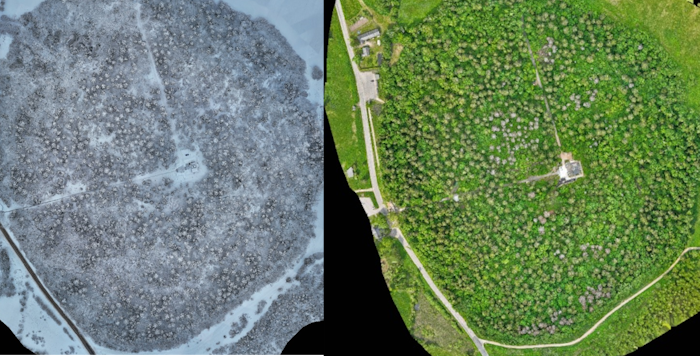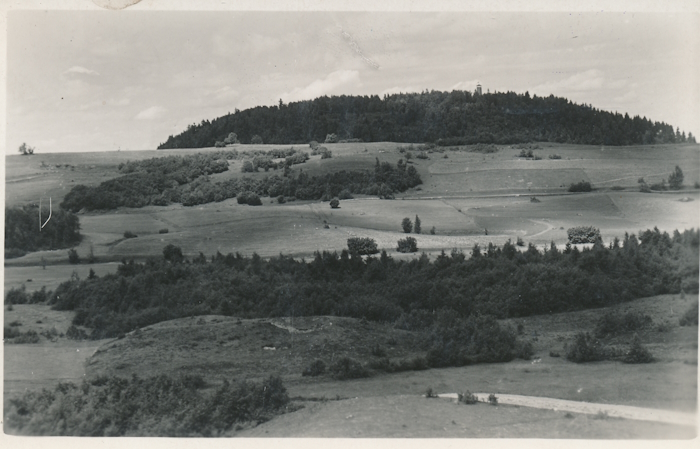
The Suur Munamäe forest
Large spruces catch your eye as you ascend to the top of Munamägi. These thick-trunked trees, which are 150 to 160 years old, have reached the end of their life. The wood-decay fungus Heterobasidion and European spruce bark beetles accelerate the natural demise of spruce trees. Therefore, several groups of withered spruce can be seen on the hill.
In addition to being the highest peak in Estonia, the value of Suur Munamägi lies in the old and largely naturally formed forest. Munamägi, with its steep slopes, was included among the lands used for slash-and-burn cultivation during the Haanja state manor era (according to maps from 1800 to 1851). In the 1880s, the area was mapped as a pasture that is turning into a woodland. As a result of grazing, the trees are of different ages – at first a sparse spruce stand grew on the pasture, and when grazing was stopped, deciduous trees started growing. Since then, the Munamägi forest has been allowed to develop more naturally. Since 1957, the hill has been under nature conservation.
Under particularly favourable conditions, the age of a spruce tree can reach more than 200 years. At some point, however, its long life will also come to an end. A dead tree, whether it is still standing or fallen, is, in turn, a food source and habitat for fungi, insects, mosses, and other forest inhabitants.
On small clearings created in place of dead trees, several species of deciduous trees and shrubs gain the power to grow thanks to increased light. Over time, a new generation of spruce trees will also begin to grow in their shade and on dead wood. This is the natural forest lifecycle and an essential condition for the emergence of a new, healthy, and resilient generation of trees.
Although there is an old-growth forest growing on Munamägi, where falling and lying trunks are a natural sight, the safety of visitors is ensured along the footpath..
25.01.2023 (left) ja 01.06.2023 (right). Janar Aleksandrov
The Suur Munamägi forest is biodiverse
The Suur Munamägi serves as a habitat for, for example, Parmelia submontana that is in critical condition, as well as the endangered Phaeophyscia endophoenicea and the Buxbaumia viridis belonging to the highest protected category. Many of the protected species found on the slopes of Suur Munamägi require the trunks of dead trees as their habitat. They are also linked to old mountain ash trees, hazel groves, maples, and ash trees. Cutting down and removing dead trees would destroy favourable conditions for many protected species.
Suur Munamägi in old photos
T
The photo depicts a 12-metre-high wooden tower believed to have been constructed in 1890. The year the photo was taken is unknown. Munamägi, ERM Fk 1523:2959, Eesti Rahva Muuseum, http://www.muis.ee/museaalView/760389
A 25-metre wooden tower can be seen in the picture. Haanja, RM F 100:451, Virumaa Muuseumid SA, http://www.muis.ee/museaalView/953011


